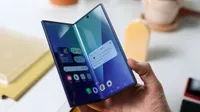Digital Camera World Verdict
Honor's slimmest and lightest foldable yet, with superb screens and a capable triple camera system. Sure, you can get better cameras for less, but if you want a folding phone that feels truly polished in every department, the Magic V5 is a strong contender.
Pros
- +
Slim and lightweight design
- +
Excellent screens with minimal crease
- +
Solid all-round camera performance
Cons
- -
Substantial camera bump
- -
Better cameras available on cheaper non-foldables
Why you can trust Digital Camera World
Foldable smartphones have come a long way in just a few short years. Once seen as experimental, fragile, and prohibitively expensive, they are now a regular fixture at the top end of many manufacturers’ lineups. Samsung has been steadily refining its Galaxy Z Fold range, Google has entered the space with the Pixel Fold, and Chinese brands like Oppo and Xiaomi are pushing slimmer designs into their domestic markets.
Honor has been a consistent player here too, with the Magic V series establishing itself as a credible alternative to the better-known options from Samsung. Previous generations showed plenty of promise – elegant engineering and strong displays – but also came with the compromises that have often defined foldables: chunky dimensions, durability issues, or cameras that didn’t match the premium price tag.
The new Honor Magic V5 aims to change that perception. Building on the foundation of earlier models, it arrives slimmer, lighter, and positioned directly against the latest rivals from Samsung and Google. But as with any foldable, the key question is whether it can balance its design with the everyday practicality and performance you’d expect from a flagship phone.
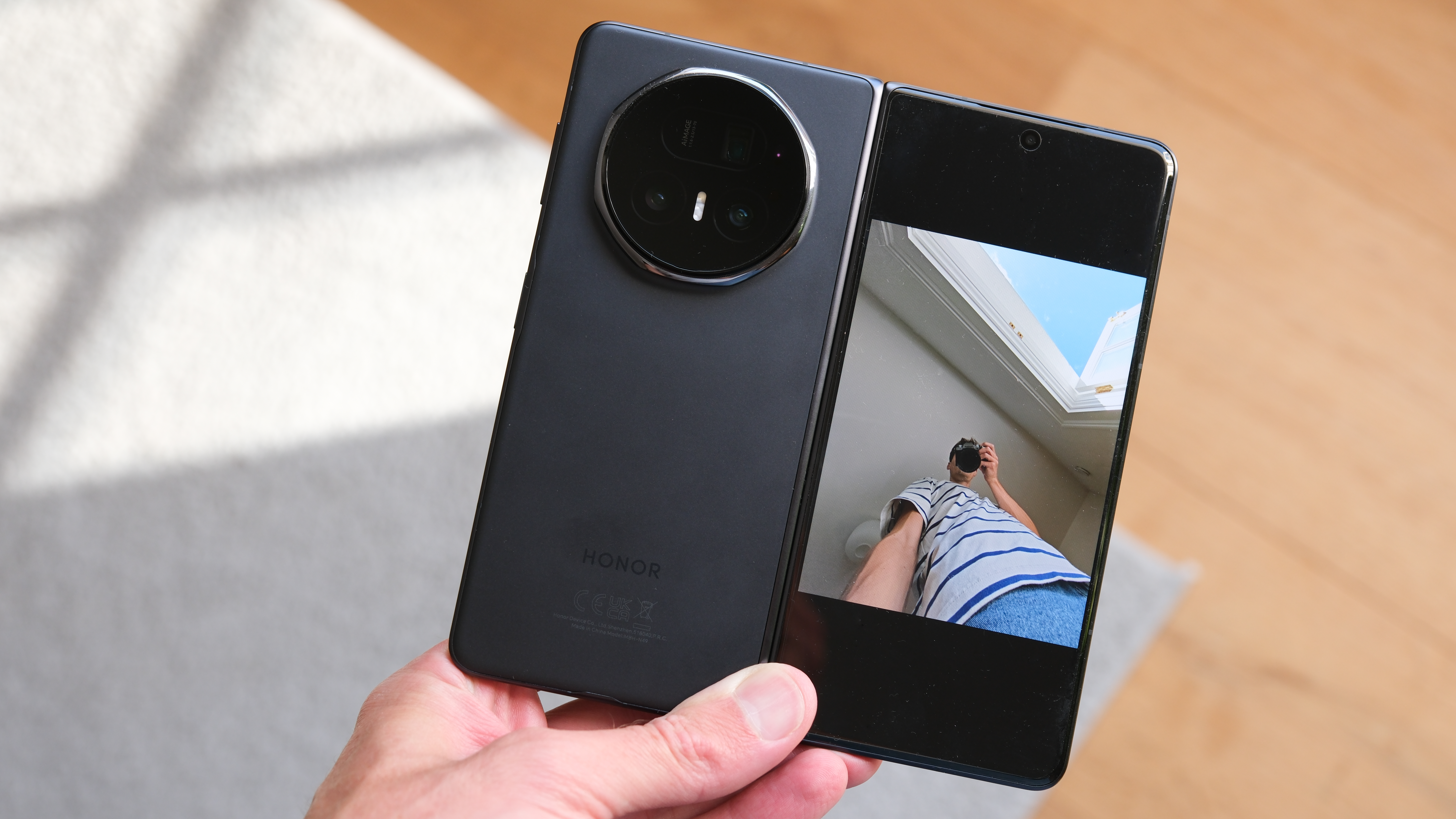
Honor Magic V5: Specifications
Cover Screen | 6.43in, AMOLED, 1060x2376px, 404ppi, 120Hz, 5000nits (peak) |
Inner Screen | 7.95in, AMOLED, 2172x2352px, 403ppi, 120Hz, 5000nits (peak) |
Processor | Qualcomm Snapdragon 8 Elite |
Operating System | MagicOS 9, based on Android 15 |
Main camera | 50MP, 1/1.56-inch, f/1.6, OIS |
Telephoto camera | 64MP, 1/2-inch, f/2.5, OIS, 3x optical zoom, 100x digital zoom |
Ultrawide camera | 50MP, f/2 |
Front facing camera | 20MP, f/2.2 |
Video | 4K 30/60p |
Battery & charging | 5820mAh |
Weight | 217g (White) / 222g (Black/Gold) |
Size | Unfolded: 156.8 x 145.9 x 4.1 mm (White) / 4.2 mm (Black/Gold) Folded: 156.8 x 74.3 x 8.8 mm (White) / 9.0 mm (Black/Gold) |
Honor Magic V5: Price
Coming to the UK and Europe as part of the global release following the V5’s initial reveal in China last month, don’t hold out for the Magic V5 to launch in the US. Importing should be possible, but you’ll need to check network band compatibility before committing.
The Honor Magic V5 is launching at £1,699, and ships in just one configuration – 16GB RAM and 516GB storage. This undercuts both the 256GB versions of the Pixel 10 Pro Fold (from £1,749) and the Samsung Galaxy Z Fold 7 (from £1,799) while doubling the storage.
For a foldable that's good value, and about as affordable as it gets. But compared with conventional phones, you’ll get better camera performance for much less money if you’re willing to sacrifice the folding screen. For Honor fans and keen photographers, Honor’s own Magic 7 Pro is arguably the smarter buy, offering stronger cameras at a far lower price.
Honor Magic V5: Design & Handling
Honor claims the Magic V5 is the thinnest foldable yet. The white version of the phone clocks in at just 4.1mm unfolded, and 8.8mm folded, while the black and gold versions are ever so slightly thicker at 4.2mm, equalling the Samsung Galaxy Z Fold 7.
The best camera deals, reviews, product advice, and unmissable photography news, direct to your inbox!
Some reviewers have questioned this claim and exactly how Honor measures its phone, but I’m not going to get bogged down in the .1mm debate. I am just going to say – this phone is thin! Whatever the fine print, Honor is at least giving the Oppo Find N5 and Samsung Galaxy Z Fold 7 some real competition without scrimping on any hardware in the Magic V5.
And the Magic V5 isn’t just thin, it's also very lightweight. At just 217g, it’s no heavier than many flagship slab phones like the iPhone 16 Pro Max.

Despite its slim size, the Magic V5 still squeezes in a volume rocker and a power button on the right-hand side; the power button also doubles up as a responsive and accurate fingerprint reader. At the bottom, there is a USB charging port and a dual SIM tray, which just about fit into the rear side of the body.
The only thing that undermines this sleekness is the substantial camera bump. For the moderate sensor sizes on offer, the bump does feel a bit oversized and makes the phone slightly top-heavy when held in the hand. But on the plus side, the halo around the lenses does double as a natural resting spot for your finger and helps keep smudges off the glass.
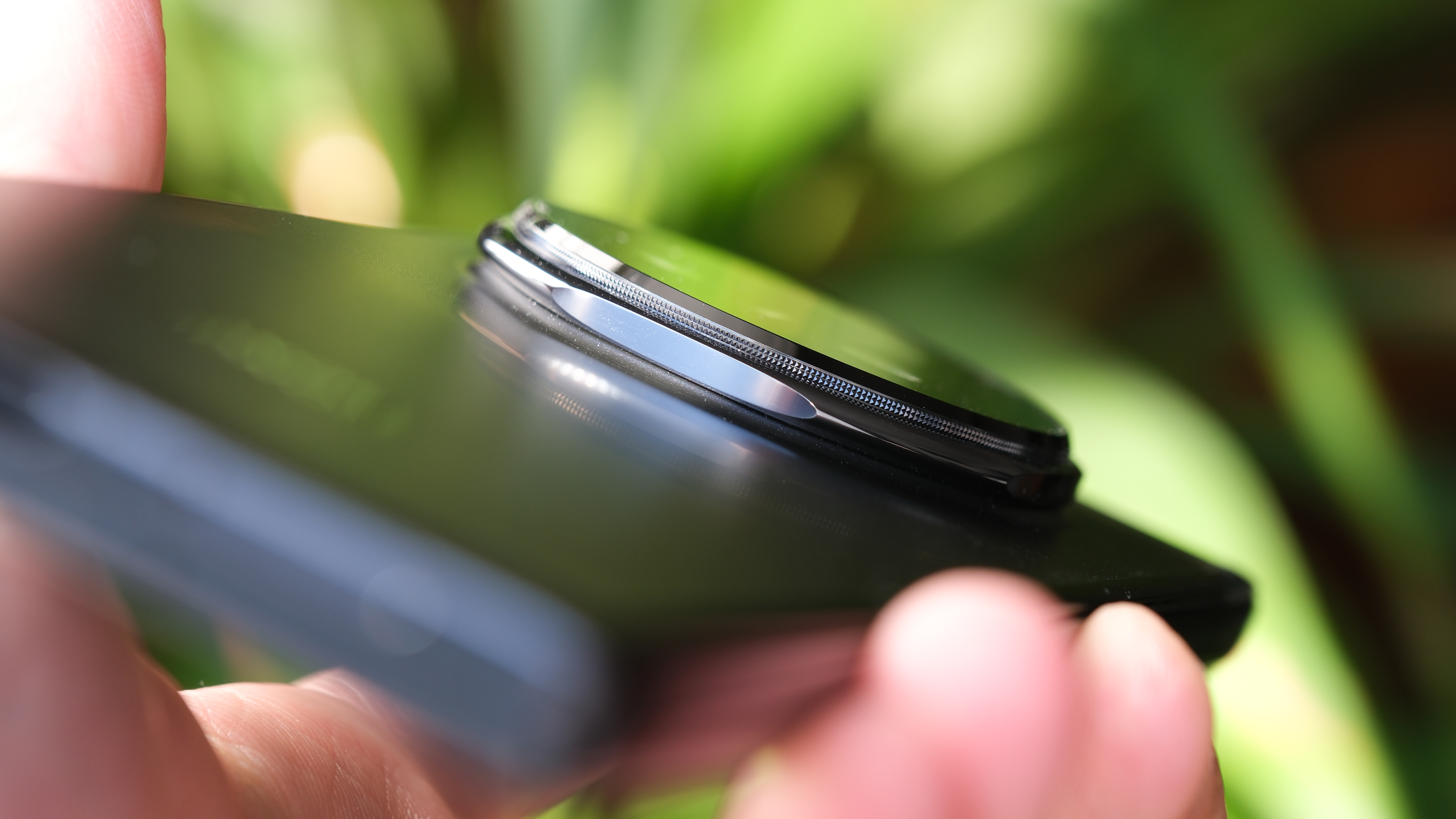
Honor has plumped for two standout screens for Magic V5. The 6.43-inch (1060x2376px) outer screen is excellent – sharp, bright, saturated, with good white balance. The variable 120Hz refresh rate makes animations smooth, and a peak brightness of 5000nits is great for outdoor viewing. The screen is a little taller than a usual slab phone, but it makes for a comfortable typing experience.
The 7.95-inch (2172x2352px) inner display is just as good. It’s closely matched to the outer screen in brightness, PPI, and color, so switching between them feels seamless.
The crease on the Magic V5 is extremely shallow and visible only at extreme angles you’re not likely to use your phone at. Like all foldables, there’s a thin plastic layer on top of the screen for protection that you cannot remove. It's not very noticeable day-to-day, but it does tend to collect an outline of dust between this and the bezels, which is a minor annoyance.
For long photo editing sessions (or just watching movies late at night), both screens feature Honor's latest eye comfort features, including 4320Hz ultra-high frequency PWM Dimming, blue light filtering, dynamic dimming, and AI Defocusing to reduce eye strain. Also, if you like to draw or edit with a stylus, both displays support the Honor Magic-Pen.
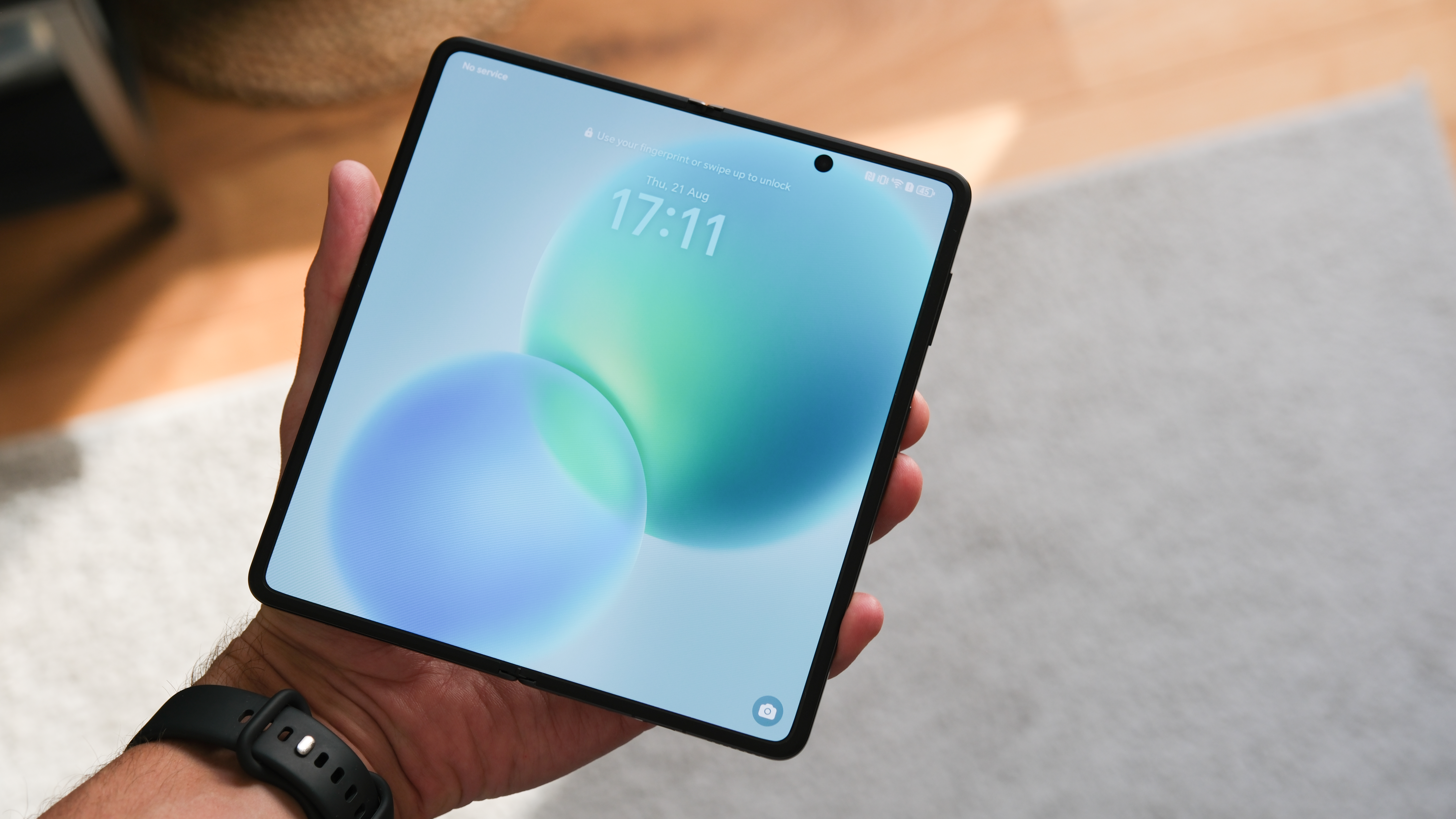
The screens have Honor’s anti-scratch NanoCrystal Shield, and the inner screen is also supported by a layer of reinforced carbon fibre, which Honor claims makes the glass up to fifteen times more impervious to drops and scratches than "standard" screen glass. The Magic V5 will also alert you if any tiny object is caught in the folding screen, so you can evacuate it as quickly as possible.
The Magic V5 also has IP58 and IP59 ratings for water and dust resistance. That’s a welcome upgrade, but it has just been slightly overshadowed by the Pixel 10 Pro Fold’s IP68 certification.
I haven’t gone out of my way to damage my test unit, but after a few weeks of use, being thrown into backpacks, a couple of flights, and several trips to sandy beaches, there are no signs of damage or wear to either screen.
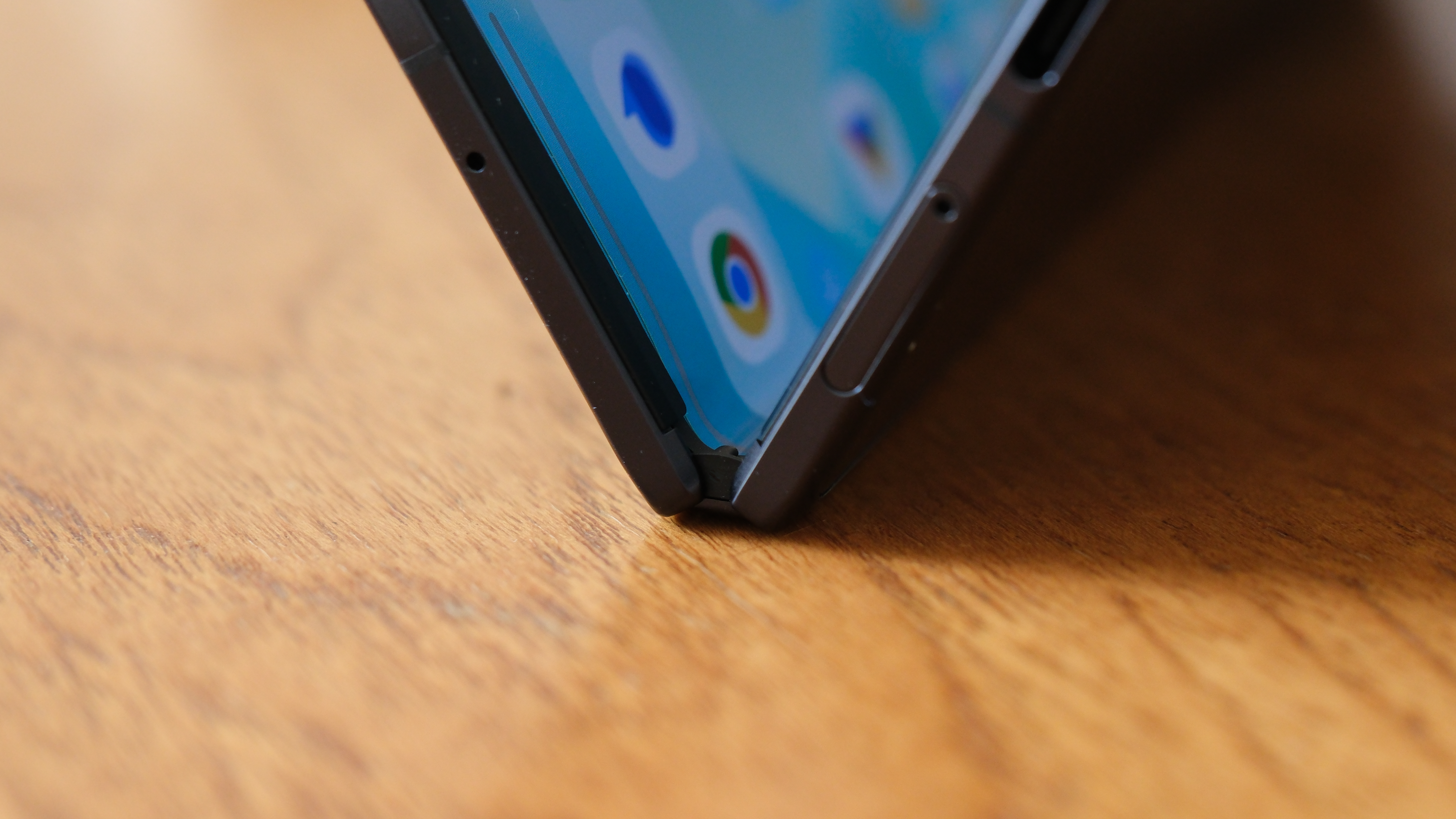
The hinge on the Magic V5 lies completely flat and feels rock-solid in my testing. Honor says the hinge is now reinforced to 2300MPa, which should survive accidentally being sat on. The hinge can also now hold any position when open, making it versatile for tent or laptop-style use. The only downside is again the camera bump, as it's hard to lay the phone down flat on its back without some major wobble.
Honor Magic V5: Camera Performance
• Main camera: 50MP, 1/1.56-inch, f/1.6, OIS
• Periscope telephoto: 64MP, 1/2-inch, f/2.5, OIS, 3x optical zoom, 100x digital zoom
• Ultrawide camera: 50MP, f/2

It's rare, but all three cameras on the Magic V5 impressed me a lot. Like previous Honor phones, the Magic V5 has three color profiles: neutral for natural tones, vibrant for more saturated colors, and authentic for warm, deep tones.
My favorite is the neutral mode, as I want all my photos to be as true to life as possible. Images showed a good balance of color, detail, and clarity, with reliable results even in challenging light. However, in an ideal world, I’d like a little something between neutral and authentic, so I hope Honor makes these profiles tunable in the future.
Honor has chosen not to partner with any big-name photography brand like the Xiaomi-Leica or Oppo-Hasselblad teamups, instead investing in its own R&D and image pipeline. I mention this as photos do have a distinct “Honor look” – which is a little flat for my tastes.
Not bad photos by any stretch, but HDR can occasionally be a little heavy-handed, especially when it comes to flattening shadows – I wish Honor would sometimes just let shadows be shadowy. Other brands' processing is more “camera-like”, which is just more pleasing to me.

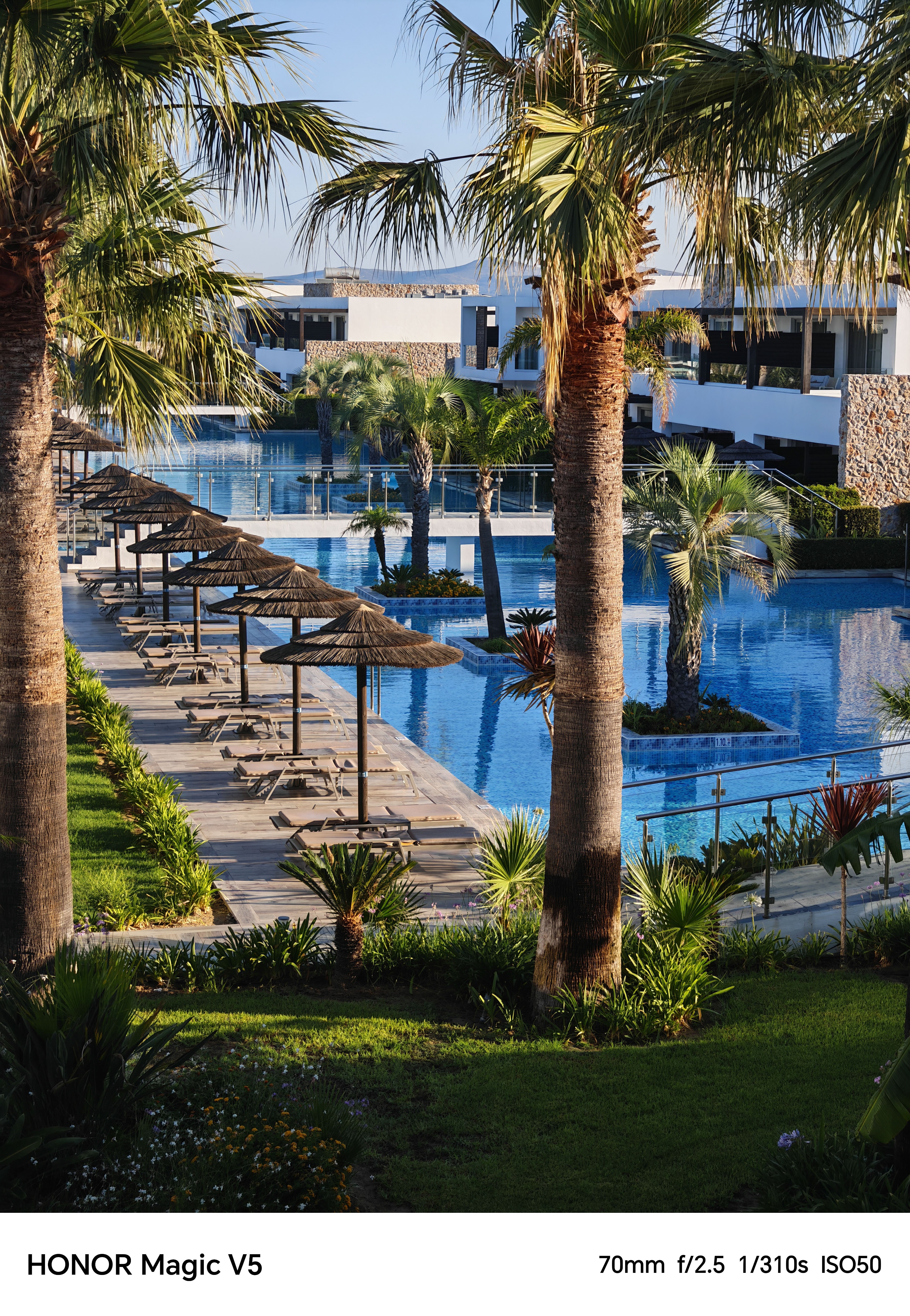
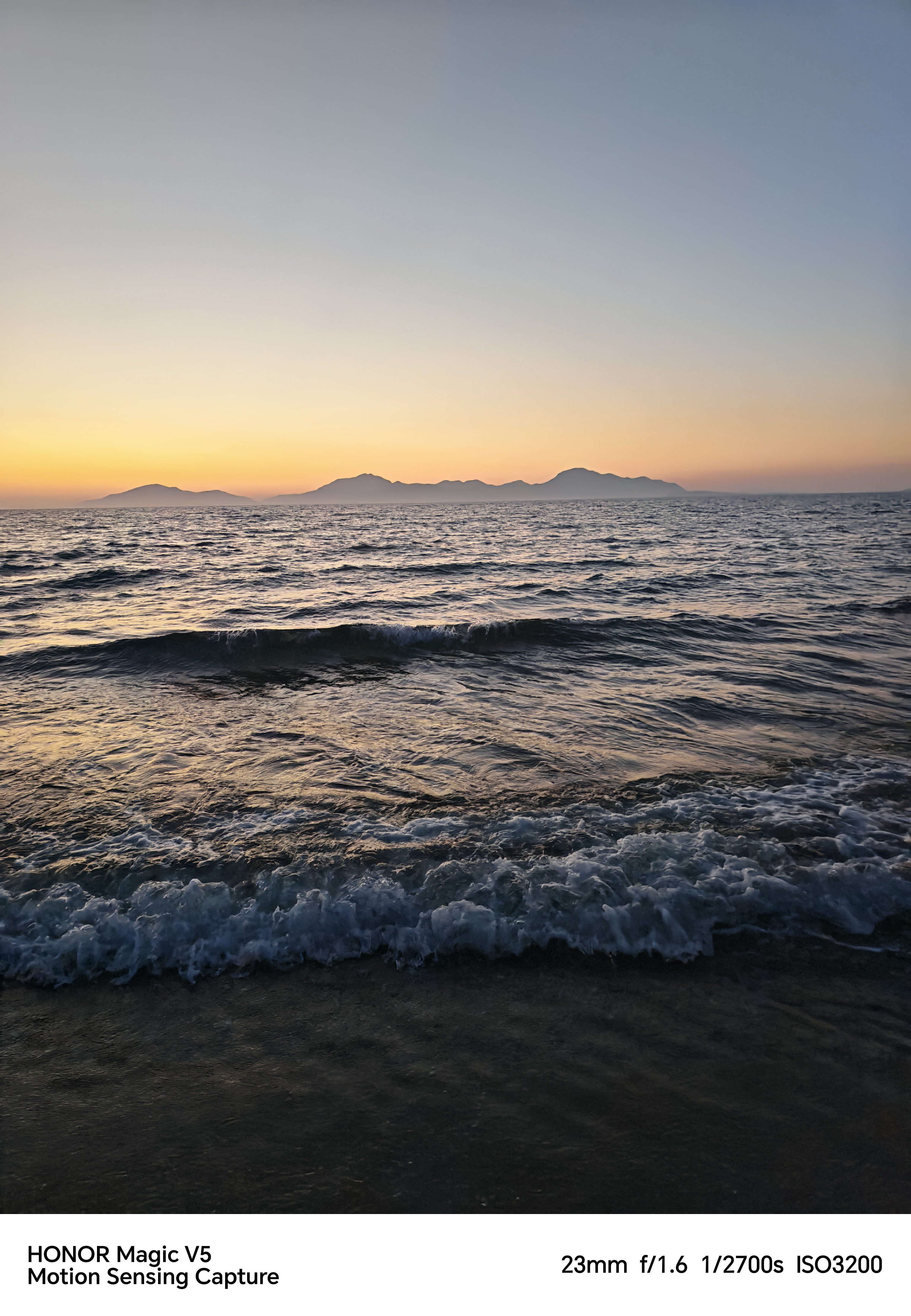
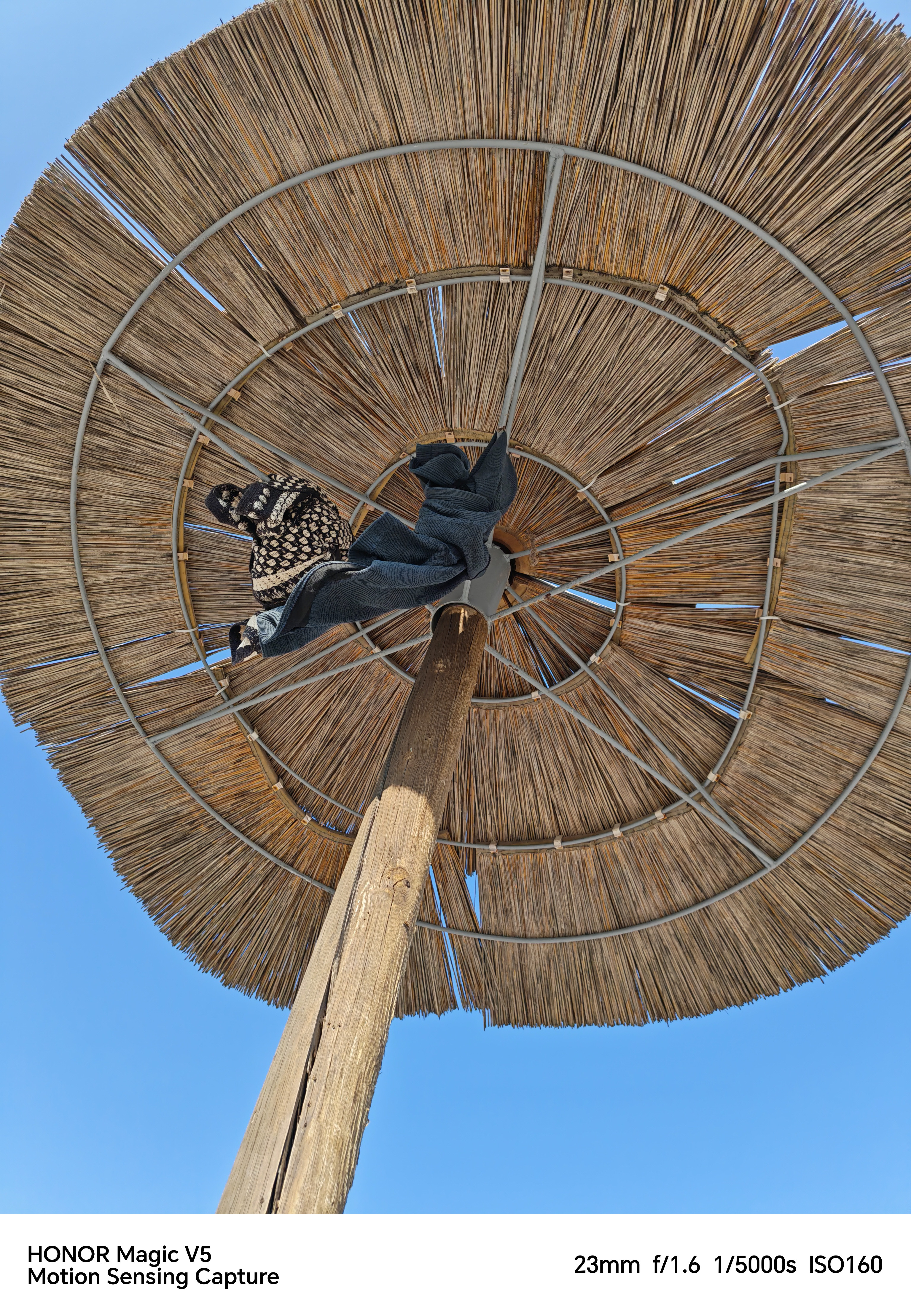


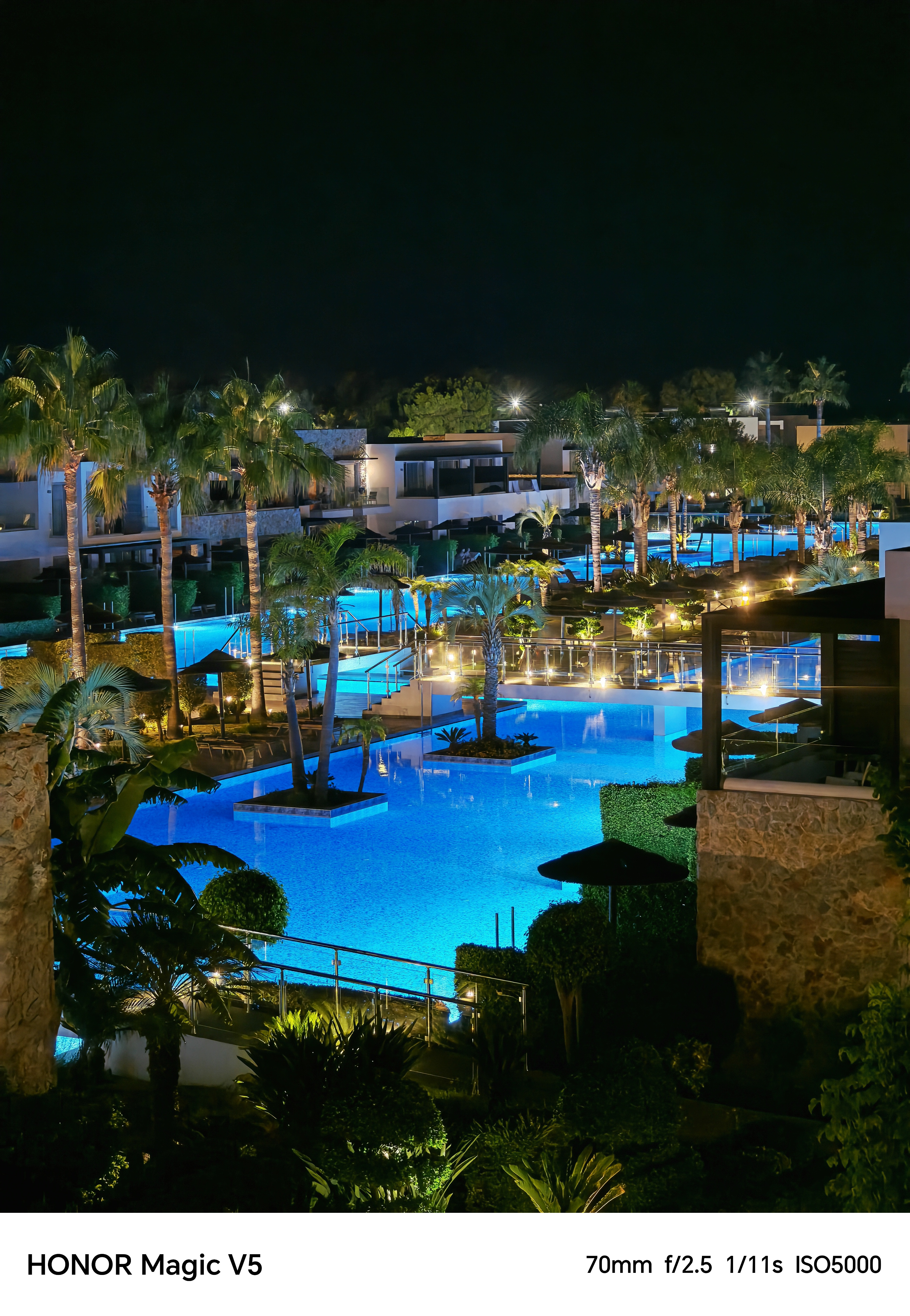

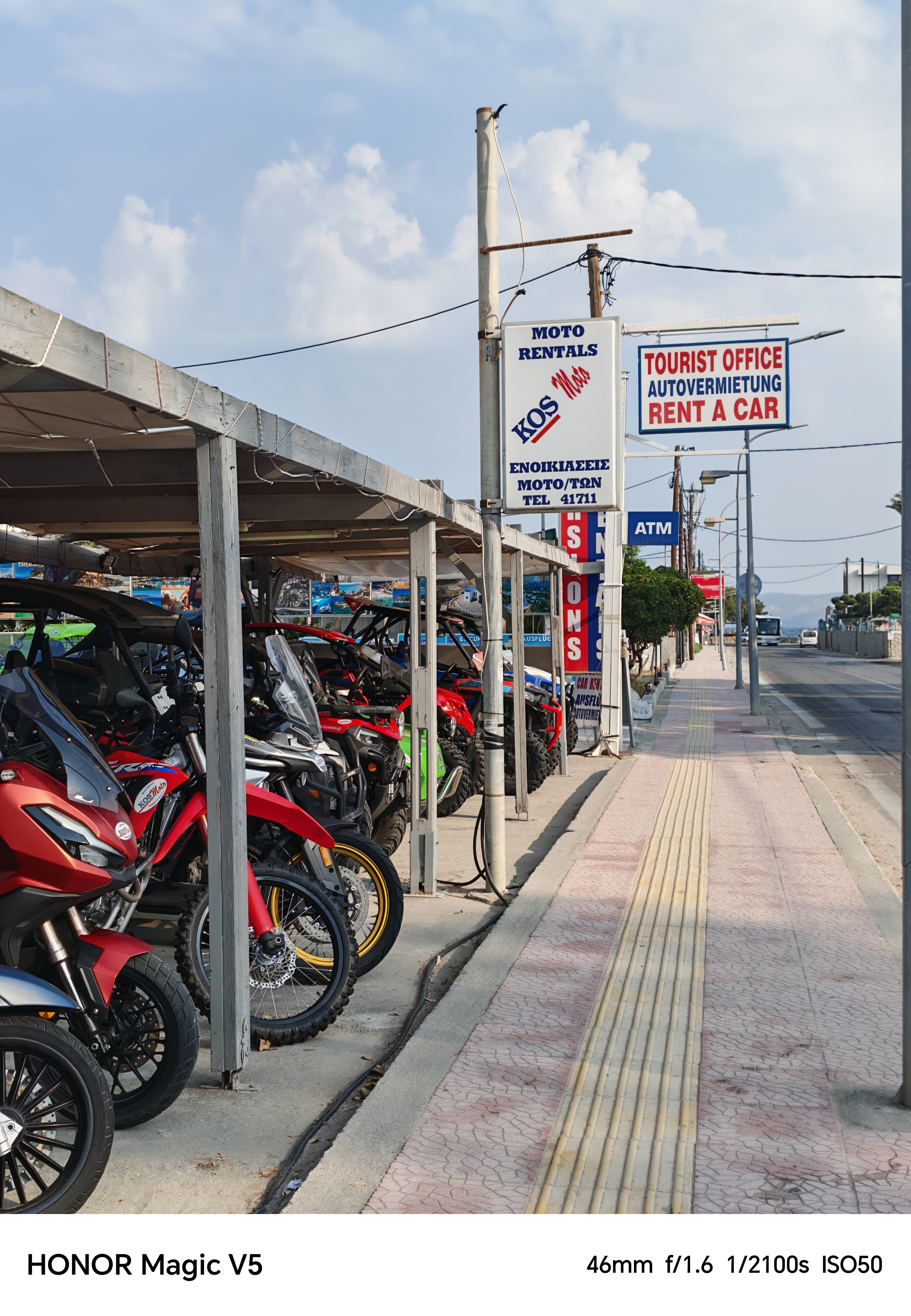

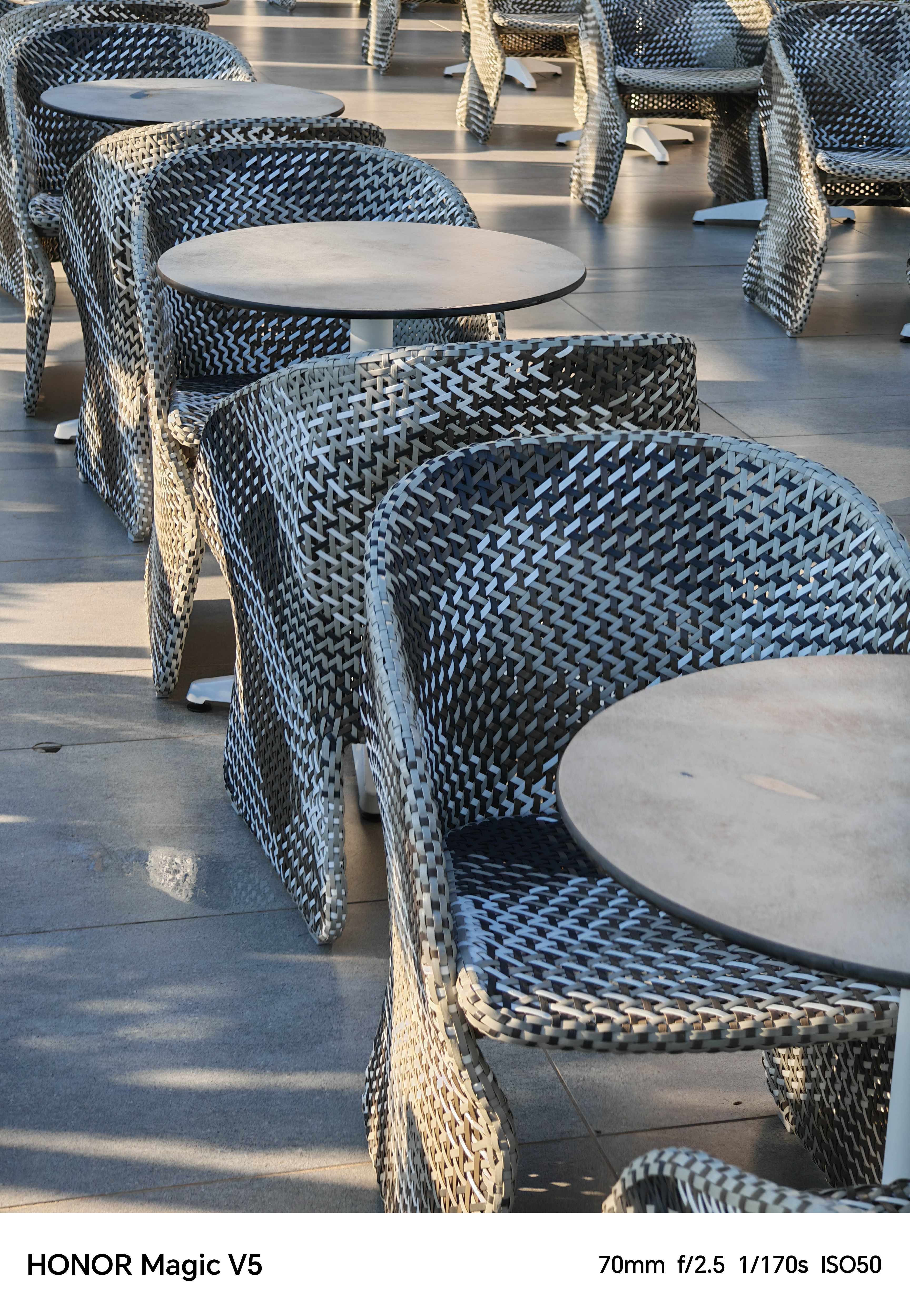

Honor’s AI-assisted Super Zoom continues to improve, and while results can sometimes be a bit wacky on complex objects (Honor does advise to avoid these), for architecture and subjects with clean lines, it works really well. Textures do still have that smoothened AI look to them, but the distance a phone can zoom and still get usable photos blows my mind.
Unfortunately, though the Magic V5 is far from the only phone to have this issue, switching between the three cameras did cause some shifts in color and white balance. Photos took on more of a yellow hue as I zoomed, and skies were particularly inconsistent. It's not a make-or-break issue, but it does stop the phone from feeling like a full camera system rather than three separate lenses.




Close focus duties fall to the telephoto lens, which thankfully is a much better option than the truly awful perspective of the ultrawide lens (looking at you, Google Pixel). The 3x telephoto doubles as a capable close-focusing option, although there is no separate macro mode or obvious indication in the app that you are close focusing.
With many other brands guiding you with on-screen icons and prompts to nail focus, this feels like something is missing from the Magic V5. Close-up images are good, but don’t match class-leaders like the Vivo X200 Ultra.

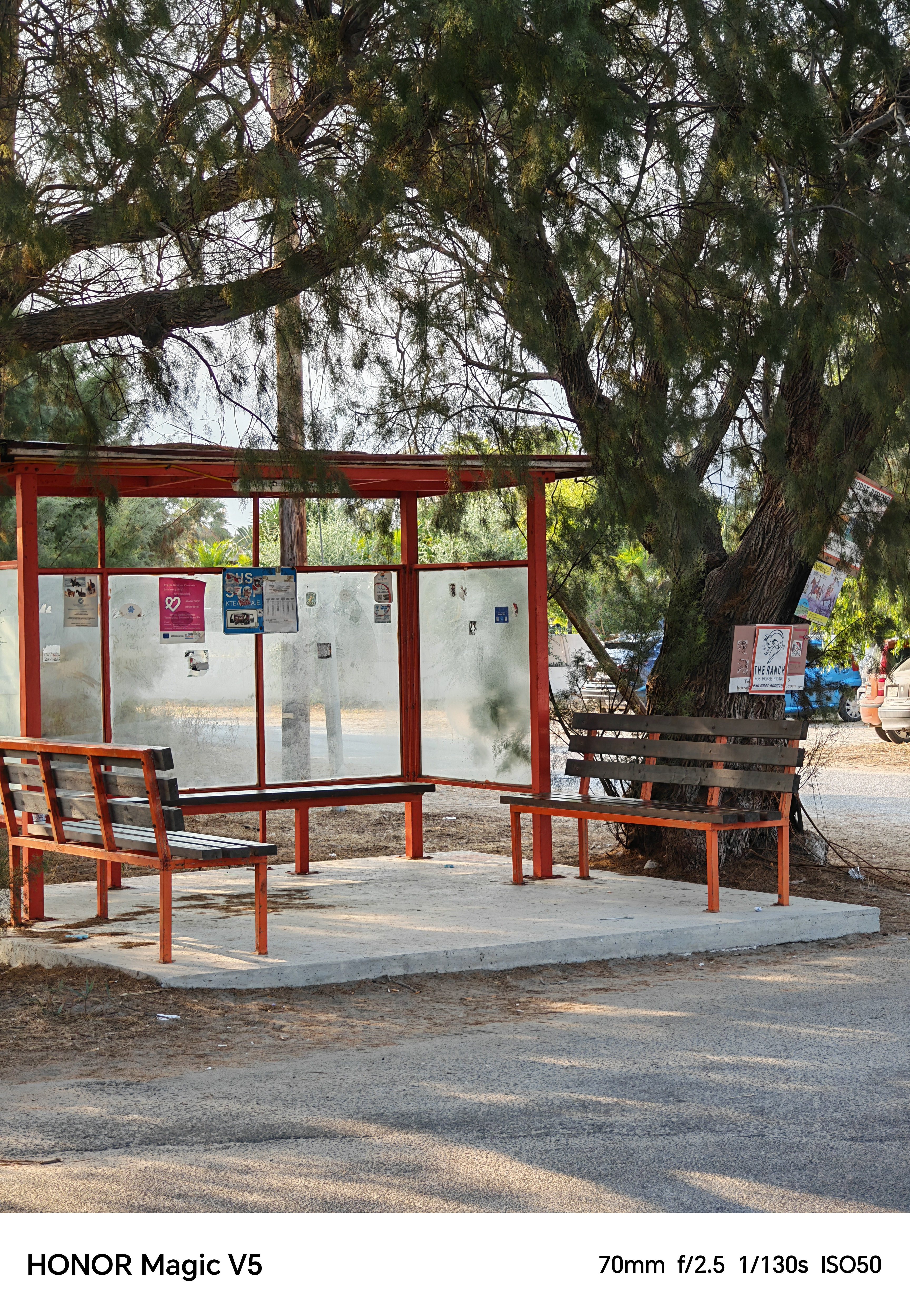
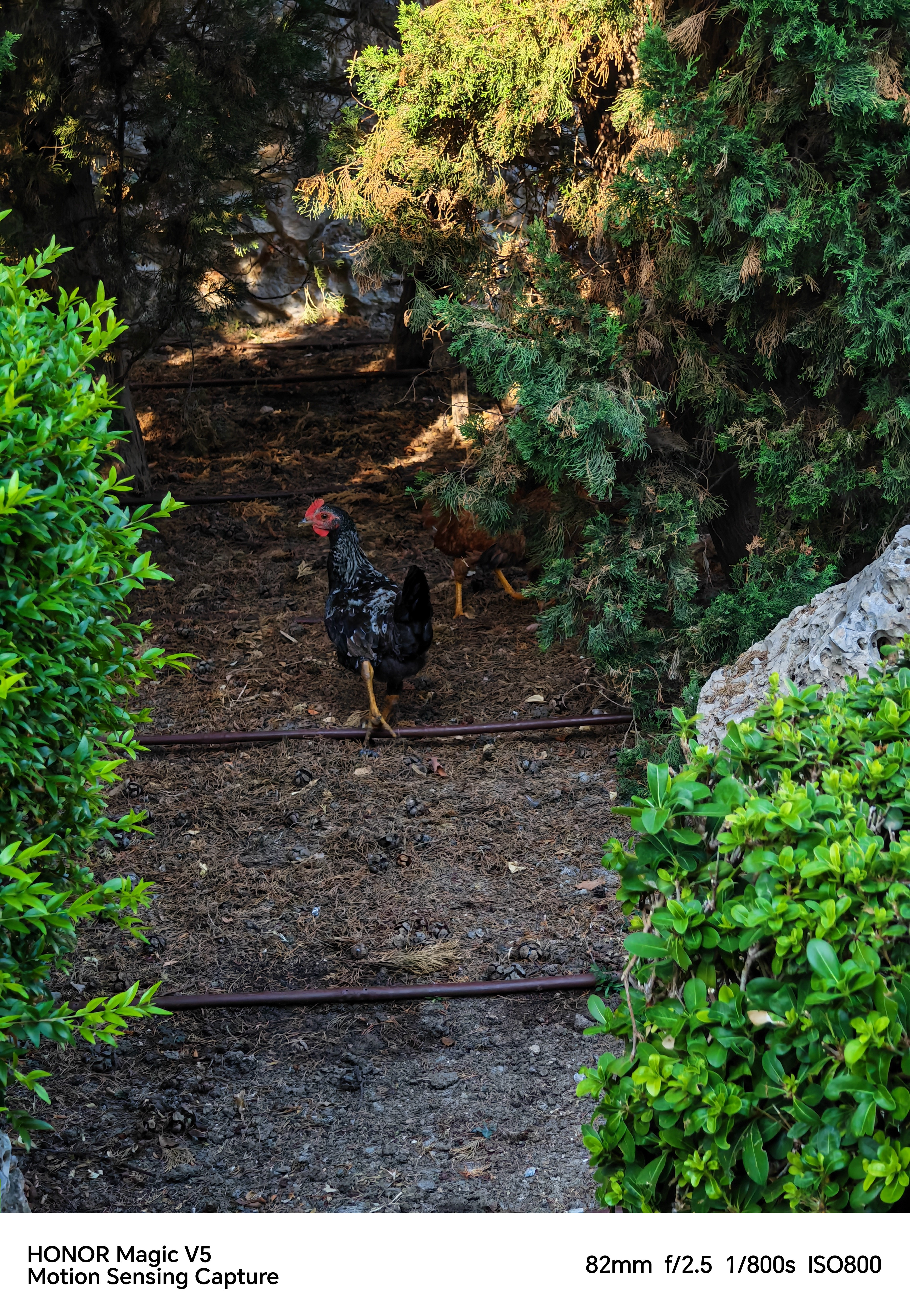

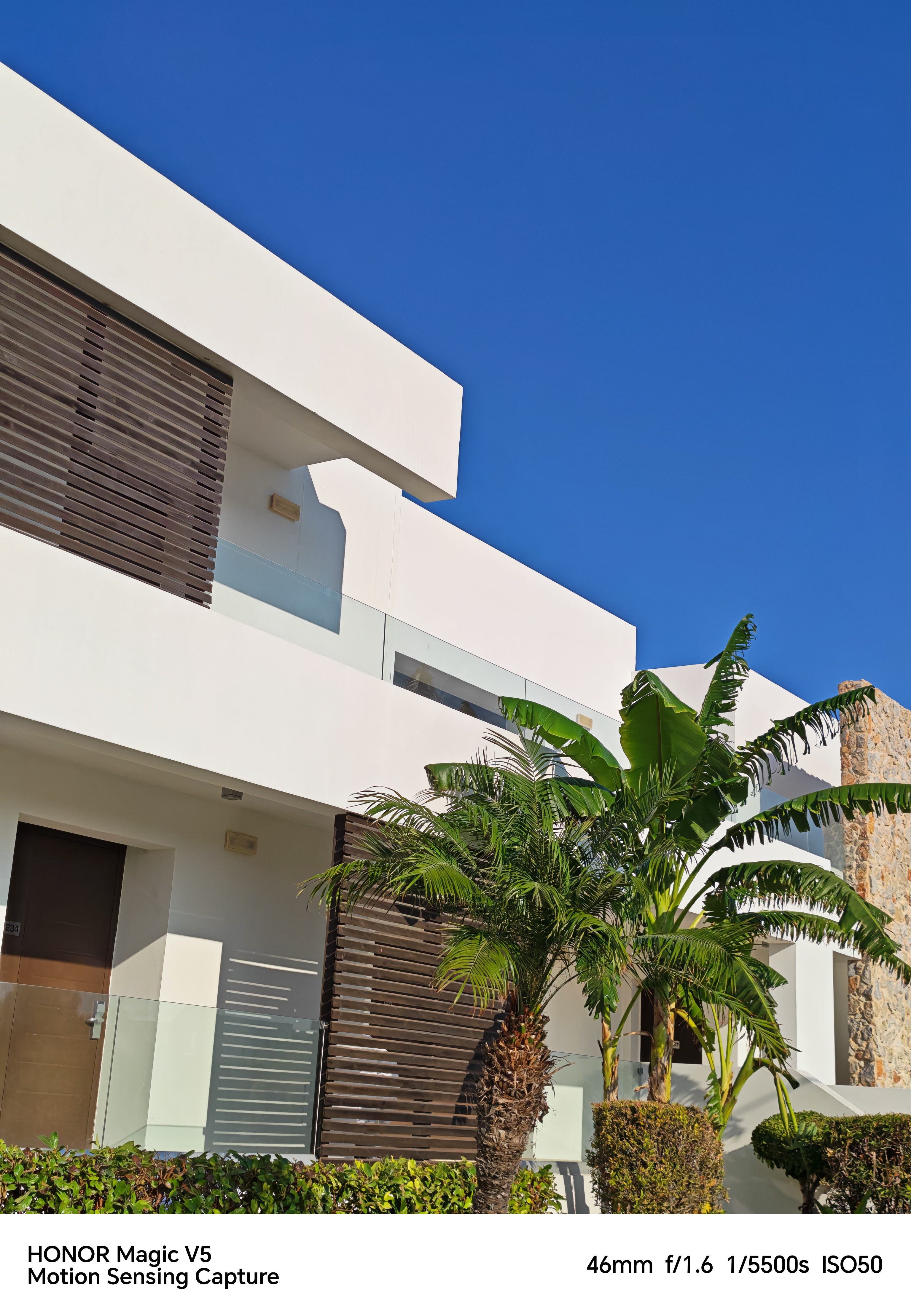

Honor is also continuing its partnership with Studio Harcourt for its portrait mode tuning. The Magic V5 does a good job of isolating subjects, although the default color options exaggerated the red of my subject's lips too much and made their skin a little on the pale side. However, for black and white, the “Harcourt Classic” is outstanding and adds some nice, deep tones.
The Magic V5 also has an AI-enhanced portrait mode. While using AI to change people's appearance might usually seem like an ethical nightmare, the AI Honor is using here is actually very subtle and handled with restraint – small tweaks to skin and hair that keep you looking like yourself, just on a good day. Where I usually leave the retouching options off in my settings, I would be much more likely to use the AI portrait mode.
Also buried in the portrait menu, there are options for film simulations with options for classic films like Kodak Gold 200 or Portra 160. While these don’t really replicate the look of film, they are fun filters.
I am just perplexed why they aren’t available in the rest of the camera modes. Film simulations are so in vogue right now – just ask Fujifilm. I really hope Honor expands on these in the future.
Video performance is good, with similar tuning to photos, and with optical image stabilization in the main and telephoto cameras, alongside electronic stabilization, videos are very smooth.
However, slo-mo recording options are limited – with no frame rates higher than 60p available at any resolution. The selfie camera also can’t match the 4K60p from the rear cameras – although Honor says this is to preserve more accurate skin tones and cleaner low-light footage.
Honor Magic V5: Phone Performance
The Magic V5 is powered by the latest Snapdragon 8 Elite processor from Qualcomm and backed up with a healthy 16GB RAM. In my testing, the V5 breezed through all my day-to-day tasks, from web browsing and streaming to photo and video editing on the go – even when multitasking two or three apps side by side on the inner screen.
Compared to slab phones, I find the increased canvas of the foldable inner screen a much better way to interact with photo editing. The square aspect ratio isn’t quite as ideal as the 3:2 of an iPad, as on the Magic V5, there is a bit more of an overlap between images and menus, but the extra space does allow a little more room to work with, as well as view images on a larger scale.
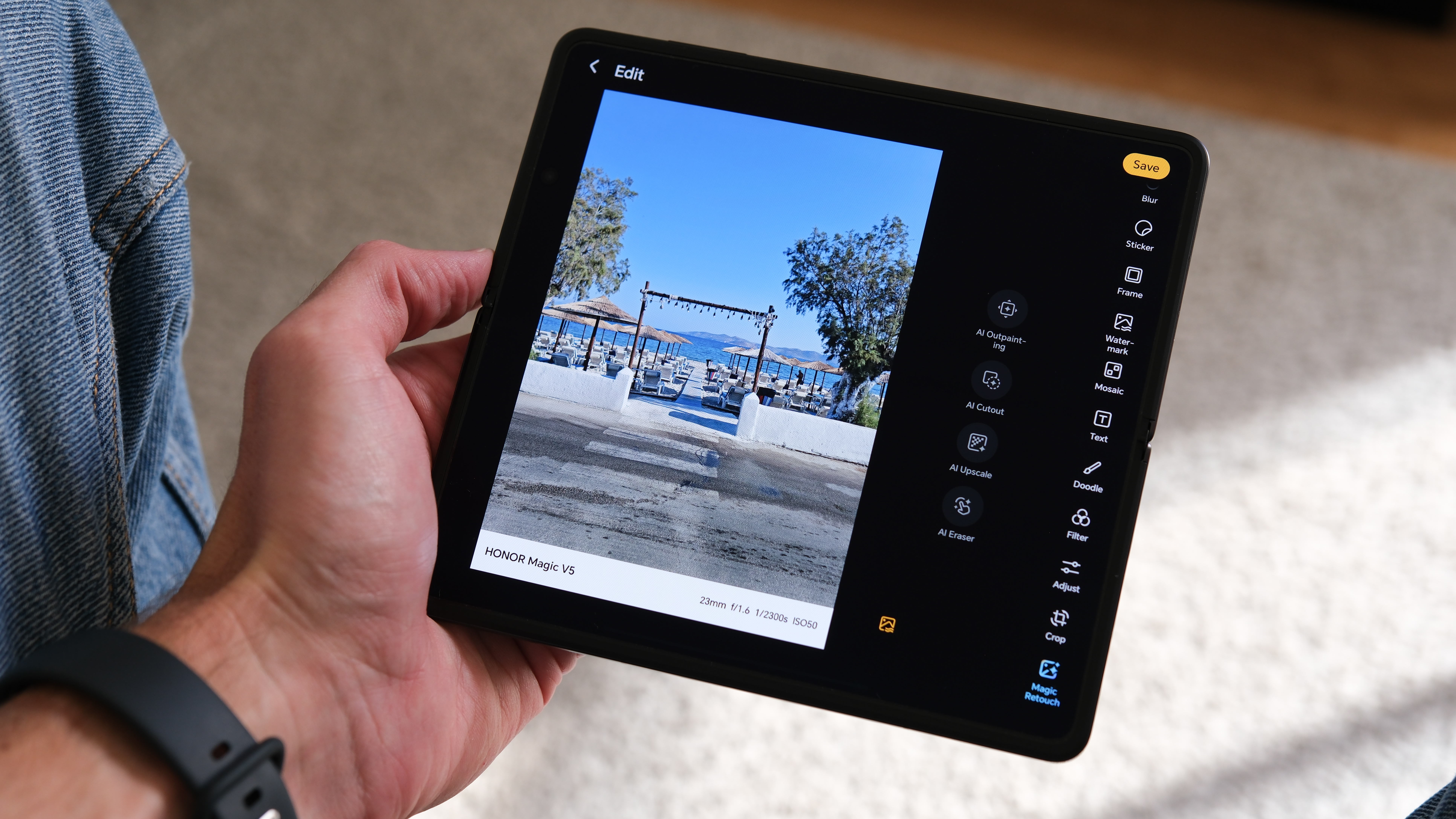
Honor’s latest AI-powered photo tools are also built directly into the Photos app. Honor’s Magic Retouch, powered by Google Imagen, includes an AI Eraser for removing objects or reflections from photos, AI Upscaling for enhancing the resolution after cropping an image, AI Cutout for selecting subjects and moving them around the frame and filling in the empty space, and AI Outpainting for expanding the canvas of a photo.
The eraser and outpainting are genuinely useful – these are tools I use myself all the time. Outpainting in particular impressed me. I always end up needing photos in more aspect ratios than I initially framed for, and where usually I would have to fire up Photoshop (as I trust Adobe’s Generative Expand the most), but after running a lot of shots through Honor’s AI, I would be quite happy doing this on the Magic V5.

Original

AI Outpainting

AI Eraser

AI Cutout
There is also Honor’s AI image-to-video in the Magic V5’s photos app, which can create 5-second video clips from a still image. These are incredibly fun to experiment with, but the quality is quite low, the five-second max is limiting, and the clips do not have any generated sound. Better results can be found with dedicated AI tools online, but if you are just getting into generative AI, it's a great jumping-off point.


I found the battery life on the Magic V5 to be excellent. The phone packs a 5820mAh cell into its slim frame, and it’s Honor’s most silicon-dense battery yet, meaning it squeezes more power into a smaller form.
The V5 easily lasted a full day of normal use, although on days when I used the inner screen heavily, I did see battery life take a hit, but not enough to give me major battery anxiety. But, charging is so quick with 66W wired and 50W wireless, a brief top-up over lunch or while I got ready for the day was generally enough to keep me going round the clock.
The Magic V5 uses Honor’s latest MagicOS 9, based on Android 15. MagicOS adds some useful customization on top, and thankfully, minimal bloatware. There are also all the latest Gemini features, including Gemini live chat, screen share, and circle to search, plus Honor’s own Magic Portal and Magic Share for quick cross-device transfers.
Android 16 should be on the way, and Honor promises seven years of updates – longer support than most rivals, and an important reassurance for a phone at a price that might discourage frequent updates.
Honor Magic V5: Verdict
The Honor Magic V5 absolutely nails almost everything I want from a foldable – a thin and light device not much thicker than most regular phones, but folds out into a big screen tablet – and doesn't majorly compromise on the cameras.
Honor has also given the Magic V5 all the bells and whistles, with quick processing, two fantastic, bright, and colorful screens, and a battery that lasts all day and has super-fast charging. It is a shame the camera bump is a bit on the large side, as it is the only black mark on an otherwise really well-designed device.
However, the larger camera bump might potentially be worth it, as the cameras in the V5 are really good – all three are solid and dependable performers, with the standout being the 64MP periscope telephoto, which takes clean, crisp photos. Honor’s processing might still not be my favorite stylistically, with images looking a little on the processed side, but colors are great, and the cameras do a good job in tricky lighting and at night.
However, foldables will be foldables, and the Magic V5, while more affordable than rivals, is still eyewateringly expensive. You can get better cameras for less money on non-folding phones, including Honor’s own Magic 7 Pro, but if you really want a folding phone and great cameras, then the Honor Magic V5 is a real contender.
Design ★★★★★ | Super slim and lightweight for a foldable, with a robust hinge and excellent displays. The oversized camera bump spoils the otherwise refined design. |
Cameras ★★★★☆ | A reliable triple camera system with a standout telephoto. Processing can be a little heavy-handed, but results are solid across the board, even in tricky light. |
Performance ★★★★★ | Snapdragon 8 Elite and 16GB RAM deliver flagship-level speed, with useful (if occasionally gimmicky) AI editing tools. Battery life is excellent, with fast wired and wireless charging. |
Value ★★★★☆ | Competitive against rival foldables, but you can get stronger cameras for less if you don’t need a folding design. Long software support adds real longevity. |
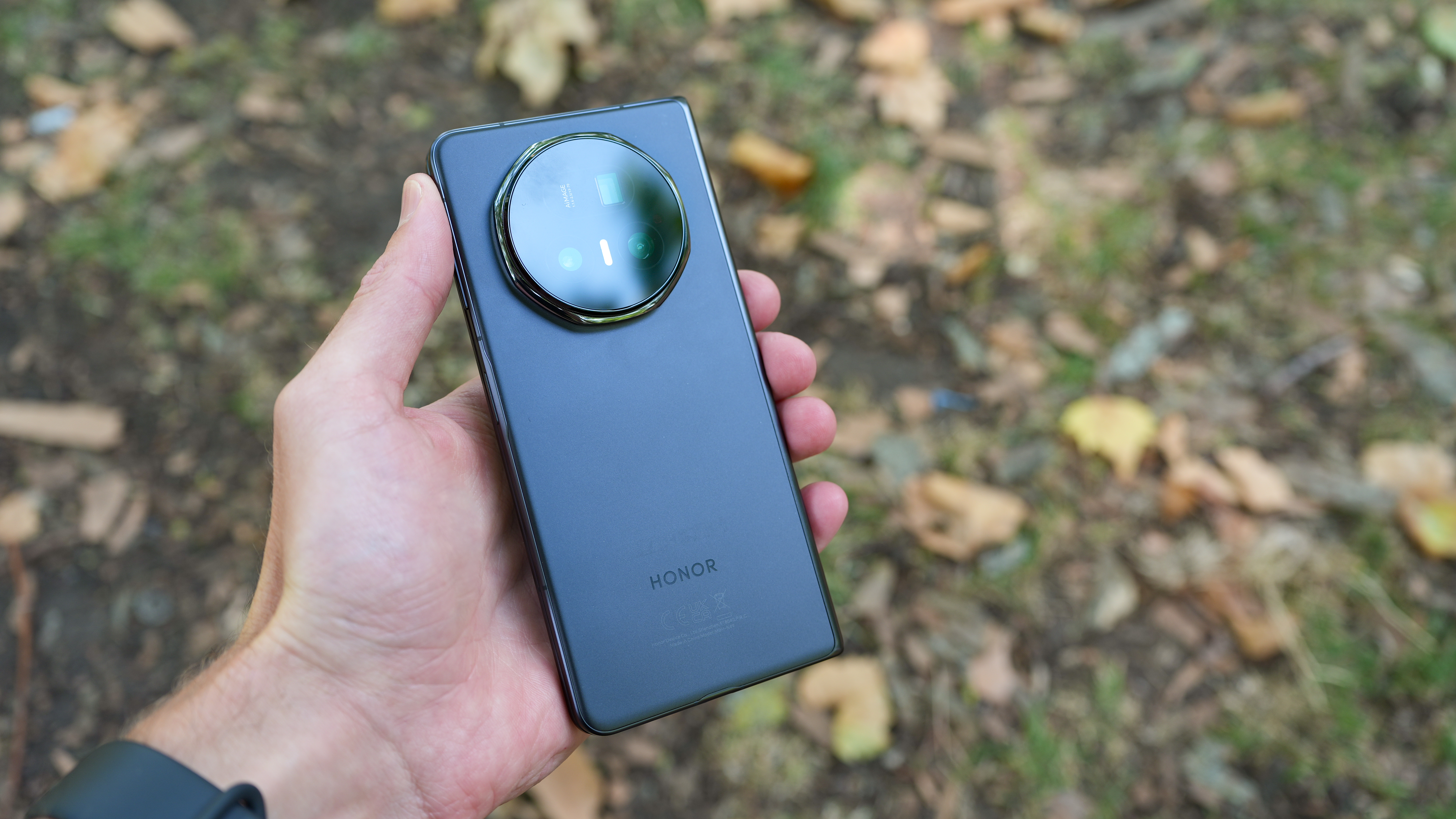
Alternatives
Samsung Galaxy Z Fold 7: The most famous of the foldables makes a comeback with a new, thinner design that rivals Oppo and Honor.
Read our Samsung Galaxy Z Fold 7 hands-on
Oppo Find N5: Super slim and great Hasselblad-tuned cameras, but the Oppo Find N5 is unfortunately limited to the Chinese market, but it does have a global ROM if you are keen on importing it.
Read our full Oppo Find N5 review

Gareth is a photographer based in London, working as a freelance photographer and videographer for the past several years, having the privilege to shoot for some household names. With work focusing on fashion, portrait and lifestyle content creation, he has developed a range of skills covering everything from editorial shoots to social media videos. Outside of work, he has a personal passion for travel and nature photography, with a devotion to sustainability and environmental causes.
You must confirm your public display name before commenting
Please logout and then login again, you will then be prompted to enter your display name.


